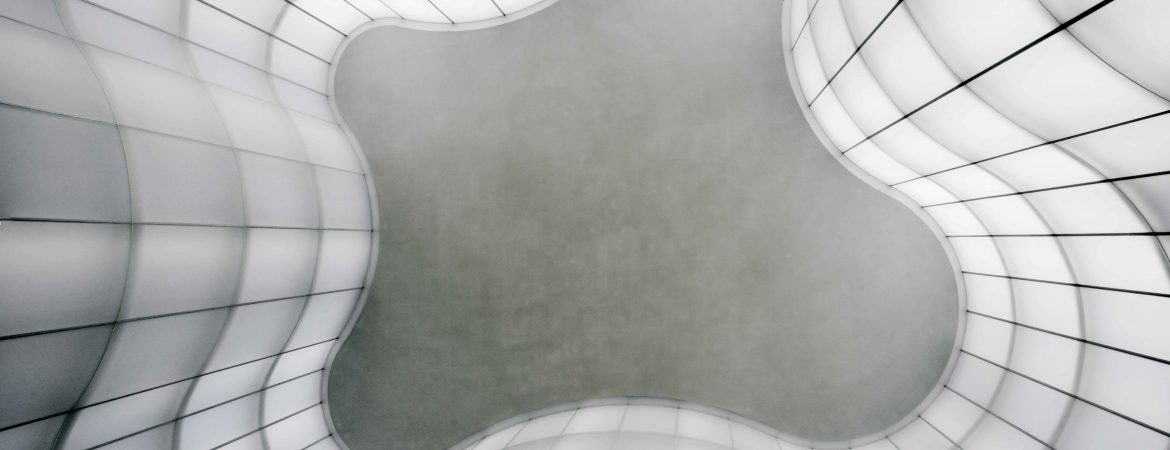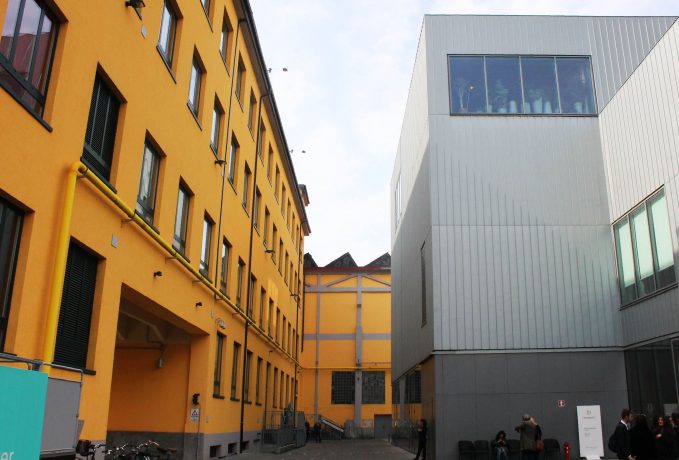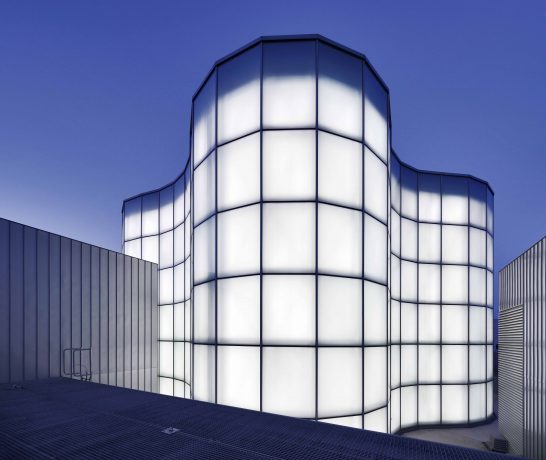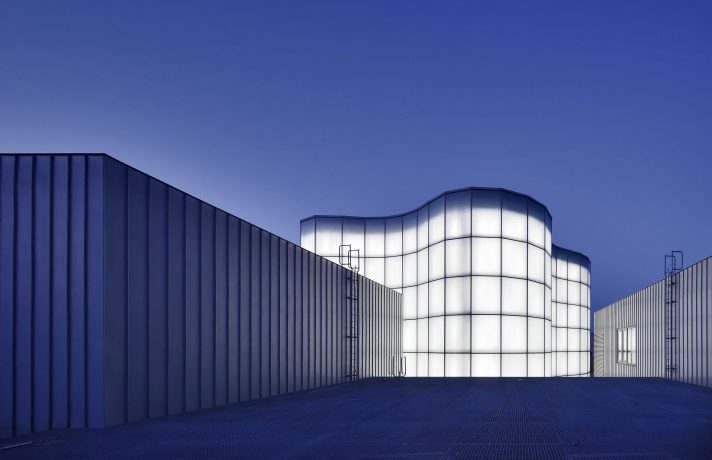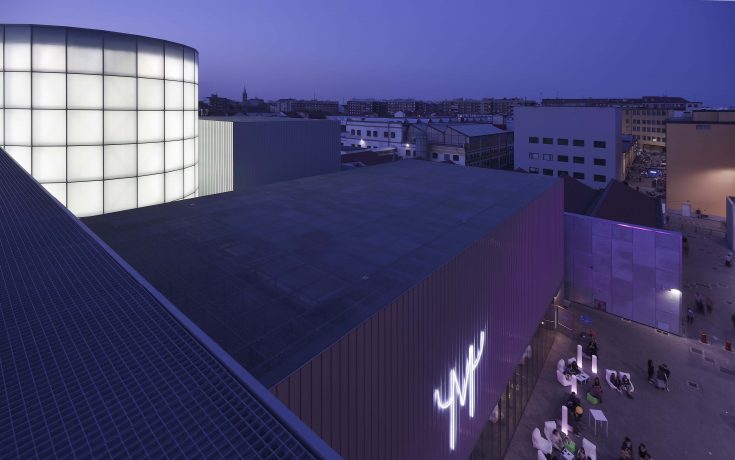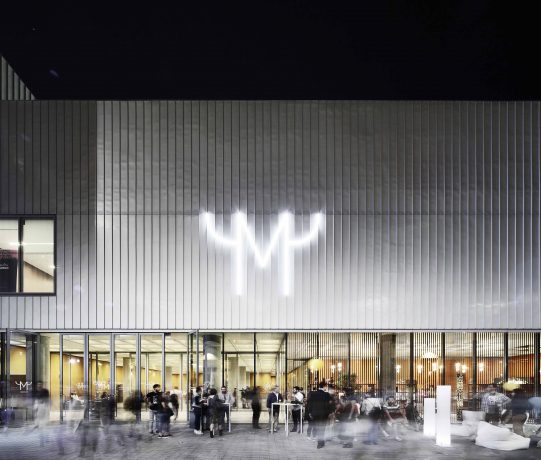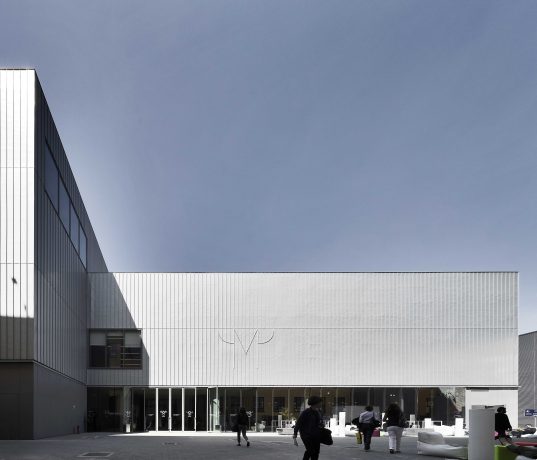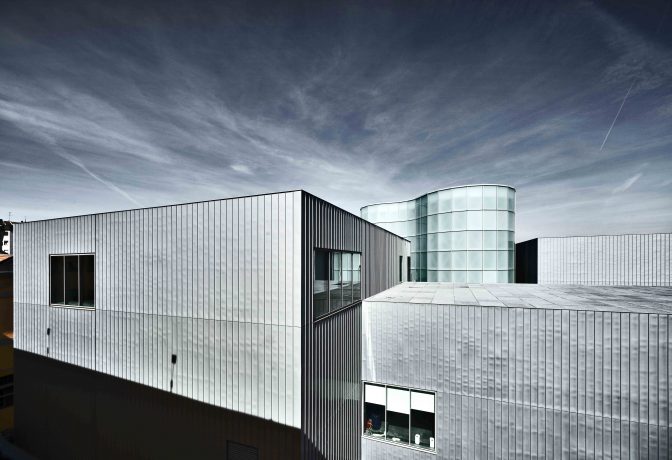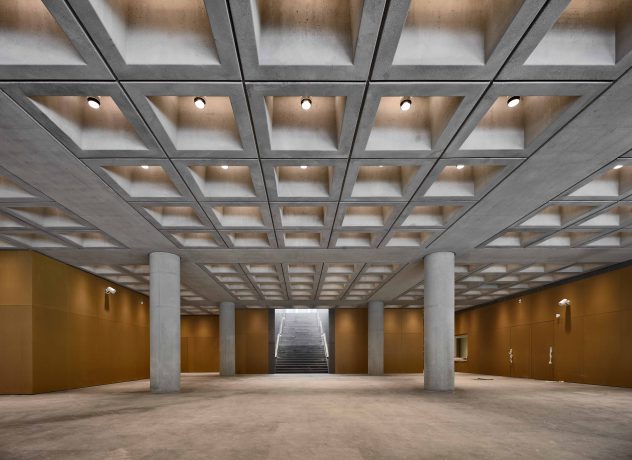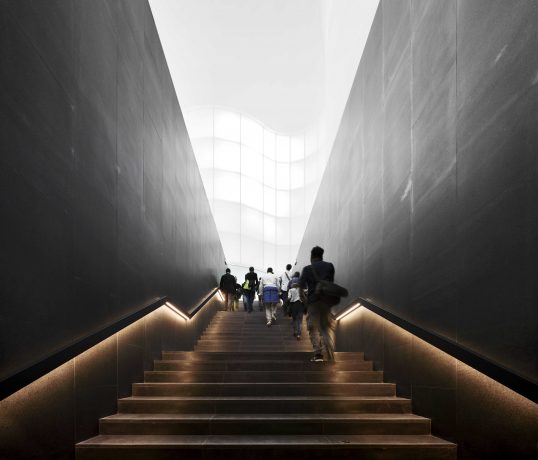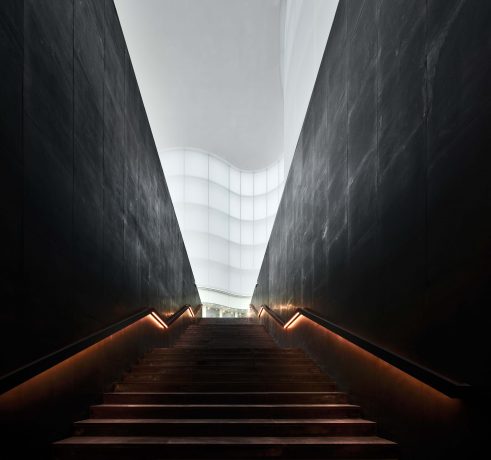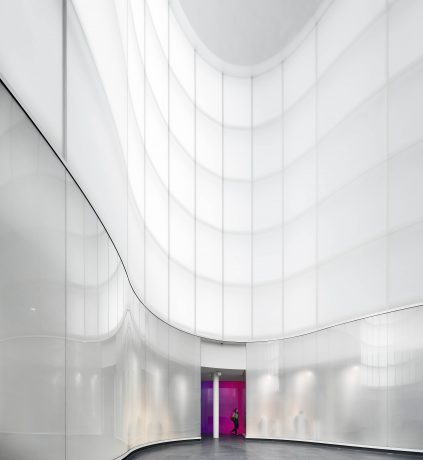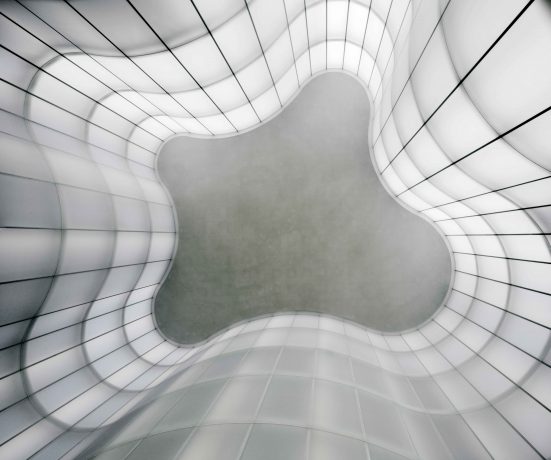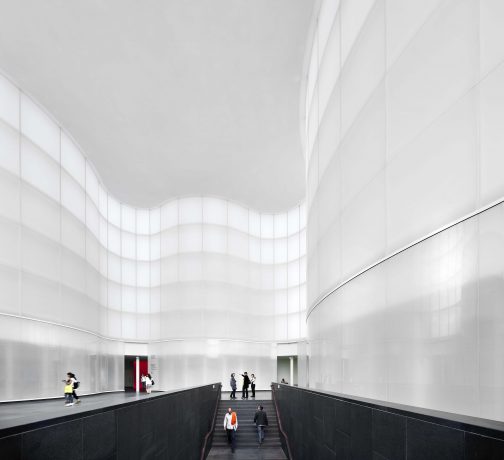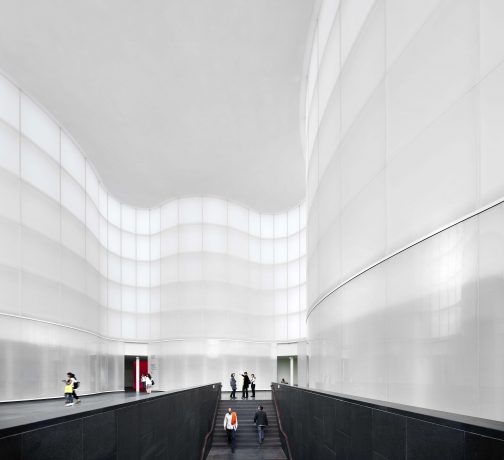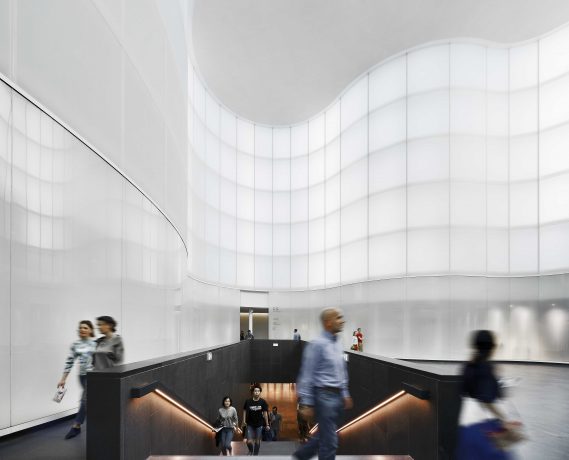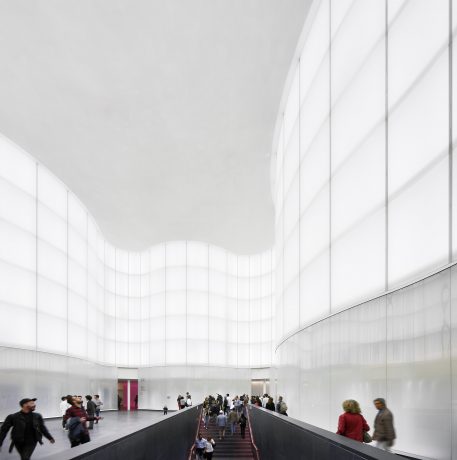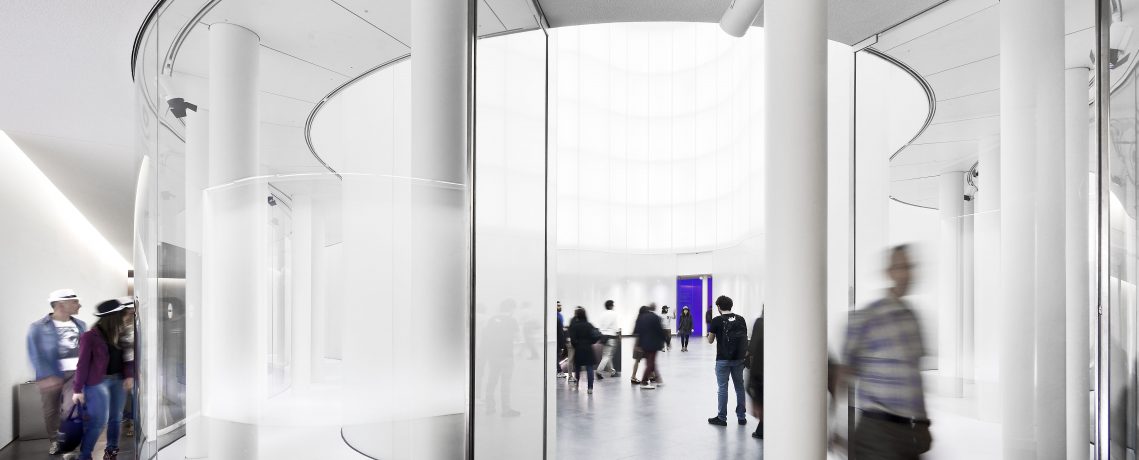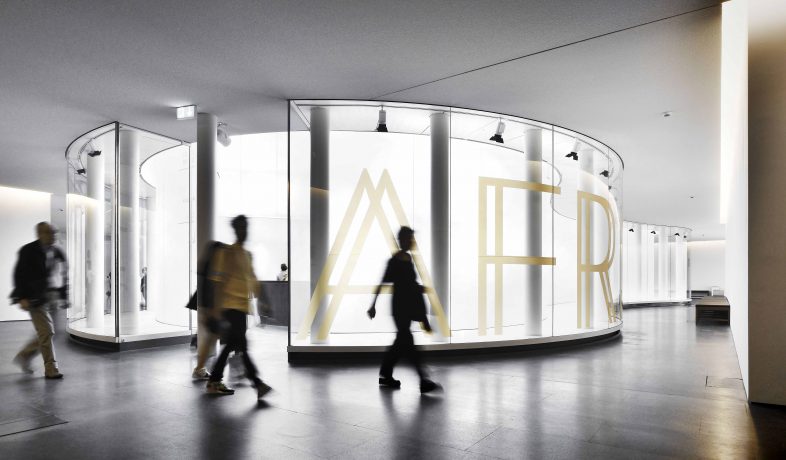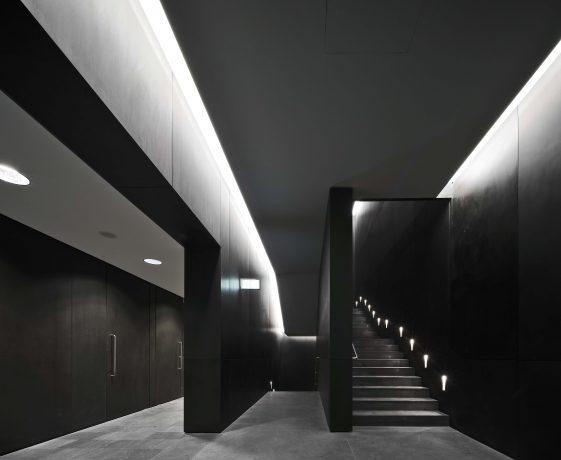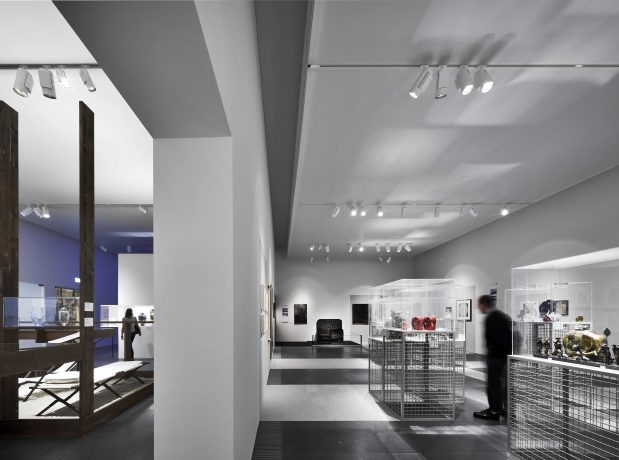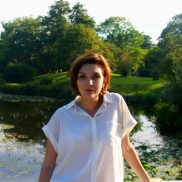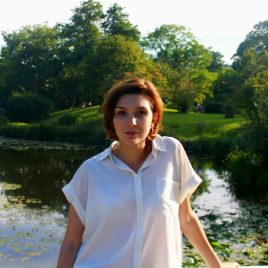In the heart of the tireless city of Milan, inside the old and abandoned Ansaldo steel factory, one of the most brilliant examples of industrial archaeology and re-qualification of industrial areas is hiding in a real architectural masterpiece. In 2014, the crumbling building has became a next generation museum. Its name is MUDEC and inside its spaces art, culture and amusement mix together in order to create a new level of cultural experience.
The project, signed by the British architect David Chipperfield, covers an area of almost 17.000 sqm, and develops on two different floors, that separate the collections from the reception area. The museum appears as an airy architecture, consisting of an aggregation of squared forms aiming to be a modern interpretation of a typical industrial building of Milan. Among the volumes covered by zinc-titanium, rises an opaque crystal structure that, with its free and organic form, breaks the linear geometry. This space becomes a covered square that connects all the areas of the museum and amazes the visitors making them feeling inside a cloud of ethereal light. The extreme contrast between the interior and the exterior is the main characteristic of the museum. This unexpected change of ambient leads the guests to a meditative and introspective experience.
The permanent collection of MUDEC is placed on the first floor of the complex and counts more than 200 works of art divided in 7 different sections. Its aim is to show how Milan collected and created its civic heritage from the 17th Century to our days. The exhibition recalls the history of collections from the first group of naturalia and mirabilia characterized by the exotic taste of the time, passing through the findings brought in Italy by explorers and missionaries from Asia and Africa in the 19th Century, to end with the section dedicated to the influence of post-war Avant-Gardes in the collection of primitive and exotic art. At the end of the exhibition you can find a painting from the Museo del Novecento, Pablo Picasso’s Femme Nue, which is one of the artist’s studies for Les Demoiselles d’Avignon (1907).
The set-up is really fascinating. The dark atmosphere of the rooms creates a mysterious setting, emphasized by the light coming almost entirely from display cabinets. This scenery conveys to the entire exhibition an air of suspended time, that gives the impression of walking through a mystic space, surrounded by the sacred masks and amulets of the most faraway populations of the world.
The first floor houses main temporary exhibitions. The contents are various and they usually concern different areas of interest. MUDEC hosts exhibitions of art, history, cultures and much more, always trying to engage the public in interesting, pleasant and definitely not boring activities. Close to the exposition areas, you can also find a theatre and a big auditorium.
It is also possible to visit the museum’s storerooms by appointment. There you can find thousands of objects from the from 1500 A.D. to the 20th century, arranged according to their provenance: West and Central Africa, the Middle East and Far East, South America and Central America, Southeast Asia, and Oceania. This section can be highly interesting for academics and researchers, who have the possibility to observe and study archaeological findings hailing from all over the world, getting a very precise overview on different cultures and the way they evolved during the centuries.
To complete the researching area, MUDEC boasts a huge Library of the Cultures that can be consulted by appointment as well. It contains more than 4.000 titles concerning art of the peoples of the world, anthropology, cultural anthropology, ethnography, museum design, discoveries and explorations, ethnomedicine and numerous art catalogs, journals, videos and photos.
MUDEC, however, is not only a place for exhibitions and studies. It intends to be also a social space, where people can have good time surrounded by culture. The ground floor, in fact, is dedicated to the commercial activities. The appearance of this area is characterized by the simplicity and the linearity, contrasting the upper part of the museum.
Here you can find a classy restaurant and a bistro, both leaded by the chef Enrico Bartolini. He loves to define his cuisine a “contemporary classic”, reflecting the style and the ideals of the entire museum. The visitors willing to bring home a nice souvenir or an interesting book, can take a look at the Bookshop or at the Design Shop, where you can find some of the most iconic pieces of Italian design.
MUDEC, therefore, is a new and innovative center dedicated to the interdisciplinary research on the world cultures. It was inspired by the ancient ethnographic museum of the city, but it has been able to develop and evolve the concept of Museum of the Cultures in order to create an innovative one. MUDEC transformed an often antiquated kind of museums into a lively cultural centre, where people can learn, study and socialize. Moreover, it promotes an active and constant dialogue with all the communities living in the city of Milan, becoming a reference point for intercultural exchanges and mutual comprehension.
Finally, MUDEC proves to be perfectly integrated with the contest of Tortona neighborhood, where it is situated, well-known for the many laboratories and ateliers of artists, designers, stylist and creatives of every sort. This area of Milan, that has always been known as an industrial zone, is living nowadays a big and positive transformation, where re-qualification and culture are running together. It is becoming one of the most important stop-over during the Design Week and it is considered a reference point for fashion.
We can certainty affirm that MUDEC is playing a very important role in these changes, calling up thousands of visitors and art lovers every week, and becoming a must-see museum for all those who are staying in Milan.
